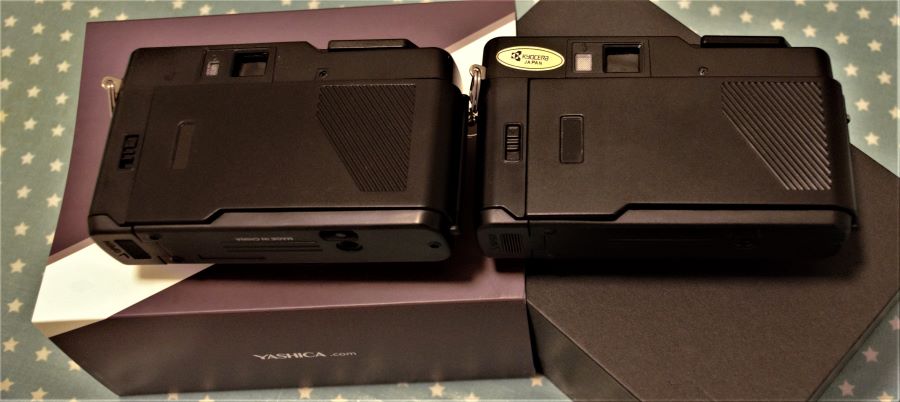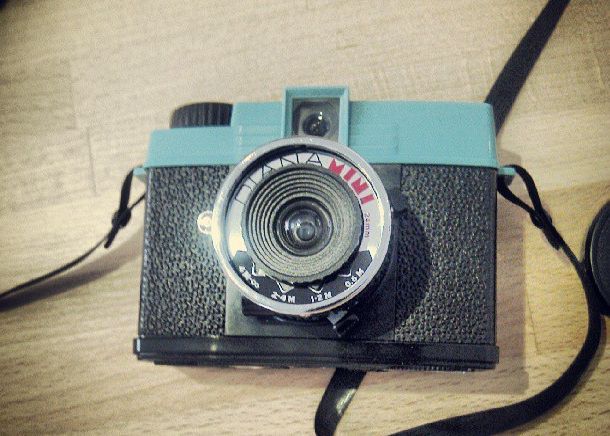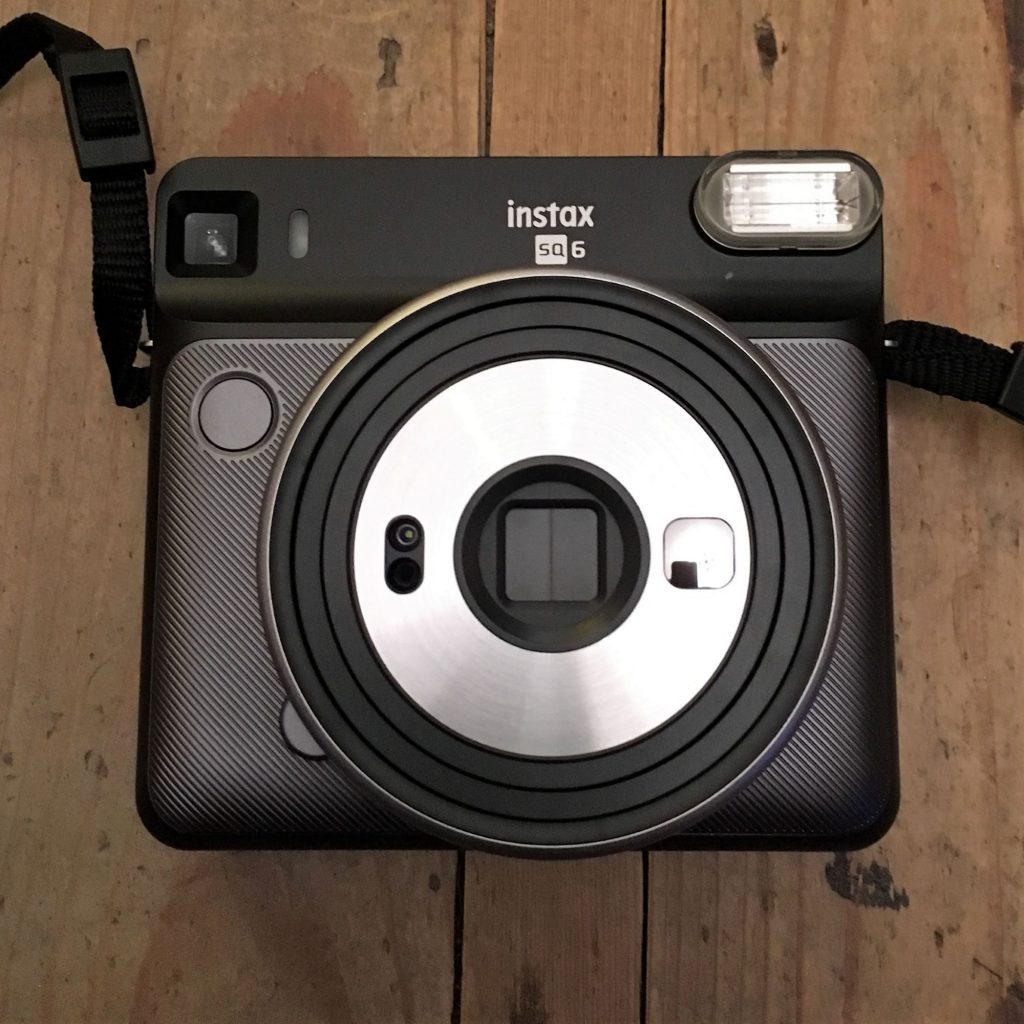So the new Yashica actually just made funding for this MF-2 Super at the last minute. Gone was the heady days of the Y35 retro digital camera launch when the company gathered more than 12 times the funding it required.
But the MF-2 is a different proposition. It’s a true 35mm camera unlike the flimsy reloadable disposable MF-1. I’d argue it is the camera they should have launched with not the Y35. But I’m not sure the world needs it.
The Y35 accrued over HK$10 Million dollars funding dwarfing the target of HK$800,000. The subsequent projects have not fared quite as well. The distinctly flimsy Lo-Fi MF-1 pulled in over HK$45,000 over it’s target of $100,000.

The MF-2 has struggled more and looked like not being funded a few days before but some mysterious big reward backers turned up at the last minute and pulled it over the target HK$100,000 line by just $7455 (that’s about £74GBP).
As I’ve discussed a few times before, the New Yashica have burnt their bridges with the Y35. A camera that was doomed by some before it was even built and failed to meet many unrealistic exceptions. The MF-1 was a best a toy camera gearing for disposable/reloadable battleground.
Enter the new/reborn MF-2 Super
This is something more and I think the company would have been better placed to have launched it first.

It is a uncanny copy of the original MF-2 Super. At first glance it looks identical. In fact they fess up to this on the box labelling it as the MF-2 Super rather than just MF-2 as per the kickstarter (important as there is a MF-2 which is slightly better spec’ed). Both the original and the new MF-2 Super have the same core specs but there are some changes.
Matching Specs
They are both fixed focus non metered flash cameras of the Konica POP class. They both come with a 38mm 1:3.8 lens. The new MF-2 confirms a 3 element in 3 groups lens and the old one was widely expected to be of this triplet configuration too. The new MF-2 confirms 1.5m to infinity focal range which what some users felt was the case for the older one.

Both have a fixed shutter 1/125 and they have 2 aperture settings. With the flash on f/3.8 and without somewhere around f/8 to f/11. These figures would imply a near focal range more like 3m than 1.5m
They have a simple low light warning system that shows up a re light in viewfinder. This is linked to a single pair of DX pins in both cameras. This serves to detect if you’ve loaded 400 ISO film otherwise the sensor defaults to 100 ISO for low light. This system does nothing other than let you know to turn on the manually triggered flash. The new versions manual suggest that flash is good at 2-4m at 100 ISO (2.5-6m at 400 ISO) suggesting a GN of 11.4 (m/100ISO) .
2 AA batteries power the flash and low light system.
There is a brightline frame line set up in viewfinder which is of a reasonable size
Looks & Build quality
Lotta plastic here, but at least it’s matt black. The styling apes 1970’s but with a curious bulge suggestive of a motorwind.

Neither are the most robust feeling and I had issues with the orginal one’s battery compartment. Both creak a bit on the film door. But the Kyocera era one feels that little bit heavier (230gms v 212gms battery free but with cap) and more solid.
The shutter clicks more louder and satisfying on the old one (although some may prefer the quieter new version). The winding action although okay on the new one just doesn’t have the same feel of the original. The slide sideways flash feels a lot cheaper and doesn’t click into place as does the original version.
Other changes

On the top you quickly note the absence of a cable point. Then you spot the lens barrel isn’t threaded for filters. So push on ones only (luckily although not described this camera fits perfectly the original’s 48mm push on cap).
Then there’s the lens. Same spec but the coatings are different. You get less coating reflections when looking at it suggesting less fully coated elements. I’ve also no idea how good the optical quality is.
Behind the glass is the other change. Like many cameras in the class the new version has a sliding Waterstone stop that moves out of the way when you turn the flash on. The old one uses a 2 aperture blades. Although that’s a technically more advanced solution, this means little in practical difference
How come no test shots ?
Look it’s just arrived at the start of my working week in the midst of one of the worst atlantic storms for a few years in Late winter Scotland.

I’m betting the exposure will have the same issues as the original – you need some knowledge and have to rely on film latitude. So expect quite a few over/under exposed shots. The optics remain to be seen in action. They won’t be awful but are they above class average like the original ? That was okay from 3-10m which is the target range for this class,
Whats in the MF-2 box
The camera comes in an understated simple box with a manual and strap.
The camera is yet to have been sold out with the kick starter. If pricing is as described there, it’s aiming for the Mythic $100USD (£76GBP) mark.
Original MF-2 Supers are not that common on eBay and sell for between £10-35
Alternatives to the MF-2 Super
In terms of what’s on the market this is sitting pretty much on it’s own as a new camera. It sits above the single use & re-loadables as well as plastic lensed lomo cameras like the various iterations of the Diana. It equally is well below the spec of things like the Lomo LC-A+.

The only cameras that are similar spec wise are some of the Instax ones.

Of course going secondhand is another matter.
MF-2 is it Super ? Thoughts for the moment
This needs field testing. The original was actually okay optically but although this has the same spec of a lens, it doesn’t mean it is the same. The optical coatings look different and the quality of the otics is as yet untested.
Even if the camera is the same, is there a market for this ?
It’s way below the spec for high end compact users. The Vintage TLR/SLR and rangefinder crowd will give it a pass. Is it too good (and pricey) for Lomo/lo-fi hoards ?
And that’s for me a shame. If this camera is anywhere as good as the original, then the New Yashica deserve at pat on the back. It has brought something back to the market. Yes it might be a flimsier pastiche but so is the LC-A+. Okay there are better vintage cameras in the class (Goko UF, Konica POP, Olympus Supertrip) but nothing like it new.

If the company had launched this first, I doubt there would have been as much bad will. Yup the purists would have snubbed it as it wasn’t a classic re-imagined/sacrilege but at least it would have been what people would have expected. i doubt it would have raked in 12 times it target. But at least it wouldn’t have pissed off a lot of folk and wouldn’t have dented the goodwill of many to the name.


My dad used to have the MF-2 Super back in early 2000. He had purchased it after his Ricoh AF-7 had some issues which was expensive to repair. Two years ago I decided to get back into film photography. Though I used SLRs for my photos I wanted a point and shoot also in my collection and wanted to get the Yashica MF-2 Super in my collection but I found it to cost $40 or more for a working pre owned one. The fact that there was no AF was also an issue. After going through some old family photos taken with both the Ricoh AF-7 ( or AF-5 can’t say for sure it had the red shutter button and self timer) and with the Yashica MF-2. I found the pictures taken with the Ricoh were much sharper and better. Also it has better ISO selection options. Another interesting thing was it was cheaper to get a good pre owned working Ricoh within $30. I got a good condition AF-40 for $18 and have taken some shots and it’s really good.